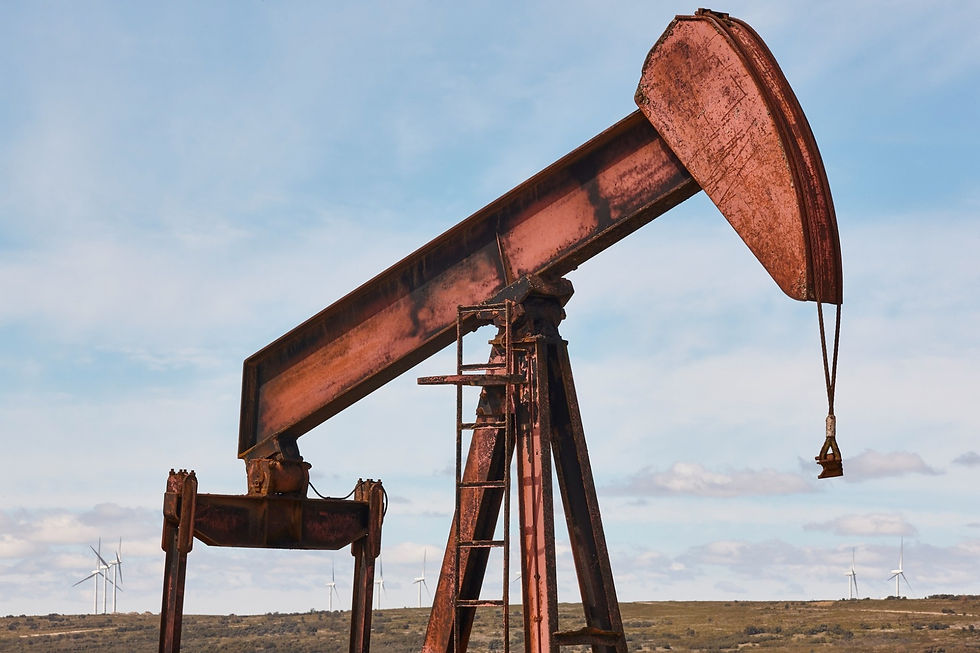COMMODITIES
Energy Commodities and the Global Transition
2025年9月2日
|
3 minutes
The global shift toward lower carbon energy systems elevates the importance of both conventional energy commodities and transition metals, with new risks and opportunities emerging across the value chain.

What Are Energy Commodities?
Energy commodities are raw materials used to produce power and fuel across industrial, commercial, and residential sectors. These commodities are traded on global exchanges and play a vital role in supporting economies, energy infrastructure, and supply chains.
Unlike financial instruments, energy commodities are physical goods such as oil, natural gas, coal, and electricity that are consumed directly or used as inputs in broader production processes. Global demand, geopolitical stability, weather conditions, and technological developments in energy production and consumption influence their prices.
As the world transitions toward low-carbon energy systems, understanding energy commodities becomes essential in evaluating the shifting dynamics of the global energy mix.
Examples of Energy Commodities
Energy commodities fall broadly into two categories: traditional and renewable. Here are the details.
Traditional Energy Commodities
Crude Oil: Widely traded and used in transport, plastics, and manufacturing.
Natural Gas: Critical for heating, electricity generation, and industrial processes.
Coal: Primarily used in power generation and steel production, though its usage is declining in many markets due to environmental concerns.
Gasoline and Diesel: Refined petroleum products that serve global transportation needs.
Renewable and Transition-Linked Energy Commodities
Ethanol: A biofuel derived from corn or sugarcane, often blended with gasoline.
Biodiesel: Produced from vegetable oils or animal fats, used in diesel engines.
Electricity: While not a traditional commodity, electricity futures now represent a growing asset class, especially from renewable sources.
Lithium, Cobalt, and Rare Earths: Although technically classified under metals, they are increasingly critical for energy storage technologies and are closely tied to energy transition trends.
Read also: 5 Top Commodities to Watch in 2025
What Does an Energy Commodity Trader Do?
Energy commodity traders make money by buying and selling contracts tied to energy commodities such as futures, options, and swaps. They operate in both exchanges and private markets, supporting liquidity and managing risks from price changes. Their role is becoming more important as global markets move through energy transition.
Key responsibilities include:
Market Monitoring: Analyzing supply-demand fundamentals, weather forecasts, and geopolitical developments.
Hedging and Speculation: Managing risk for companies exposed to price volatility (e.g., airlines, utilities) or seeking to profit from short-term price changes.
Contract Execution: Facilitating the settlement and delivery of physical goods or financial instruments.
Data and Risk Analysis: Using models and real-time data to inform trading decisions and minimize risk exposure.
Energy commodity traders are integral to price discovery and ensuring the continuous flow of energy across markets.
The Role of Energy Commodities in the Energy Transition
As the global economy decarbonizes, the importance of both traditional and new energy commodities is evolving.
Supporting Grid Reliability
Natural gas, for example, is often used to balance electricity grids when renewable sources like wind and solar fluctuate. This makes it a transitional fuel in the move toward cleaner systems.
Enabling Renewable Technologies
Commodities such as lithium and cobalt are essential in the production of batteries for electric vehicles and energy storage systems. Demand for these materials is rising rapidly, creating new trading and investment dynamics.
Driving Policy and Market Shifts
Governments and institutions are increasingly aligning trade, subsidies, and emissions policies with climate goals. This affects how energy commodities are priced, taxed, and transported.
Risks and Considerations
While energy commodities provide diversification and liquidity, they are subject to risks such as:
Volatility: Prices can shift dramatically due to unforeseen events like geopolitical tension or extreme weather.
Regulatory Risk: Environmental and trade policies can alter demand or impose new costs.
Transition Risk: As countries move away from fossil fuels, traditional energy commodities may face declining demand, affecting long-term exposure.
Read also: Energy Derivatives: What They Are, How They Work & Benefits
Conclusion
Energy commodities ranging from traditional fuels like oil and gas to transition-critical materials such as lithium remain central to the global economy and infrastructure. As the world advances toward cleaner energy systems, these commodities are not only instruments of current economic activity but also strategic assets shaping the future of energy.
Professionals and businesses involved in the commodity space must stay informed about the evolving landscape, including the shift toward renewables, emerging regulatory frameworks, and the role of energy commodities in facilitating the energy transition.
Understanding how these assets are produced, traded, and regulated is critical for making informed decisions in an increasingly complex market environment.
由时瑞金融集团内容团队撰写和编辑。
免责声明: 本文件仅供参考之用。本文件在任何情况下均不应被解释为购买或出售的要约或招揽,也不构成与任何资本市场产品相关的财务建议或推荐。本文件所载的所有信息均基于公开信息,并且来自时瑞金融认为在发布本文件时可靠且正确的来源。
对于因任何遗漏、错误、不准确、不完整或其他原因,或因依赖此类信息而遭受的任何损失或损害(无论是直接、间接或间接损失或任何其他形式的经济损失),时瑞金融概不承担责任。期货合约、衍生品合约和商品的过往表现或历史记录并不代表未来表现。本文件中的信息如有更改,恕不另行通知。
另请参阅我们在 https://www.straitsfinancial.com/important-notices-and-disclaimer 上的重要声明。
见识
见识
凭借时瑞金融集团的精选见识,领先市场一步。
OTC DERIVATIVES
How OTC Derivatives Shape Modern Investment Strategies
2025年11月28日
|
8 minutes
OTC derivatives play a key role in shaping modern investment strategies by offering tailored contracts that address specific risk and exposure needs. Their flexibility allows investors to hedge positions, manage volatility, and adapt to shifting market conditions.
INVESTMENT STRATEGY
What to Know About Crude Oil Before Investing?
2025年11月26日
|
7 minutes
Crude oil investing is shaped by trends in global production, consumption patterns, and energy policies. These forces contribute to price fluctuations and highlight the distinctions between crude oil and products derived from it.
INVESTMENT STRATEGY
Building an Investment Plan for Long Term Growth
2025年11月24日
|
7 minutes
Developing an investment plan involves setting clear objectives, selecting diversified investment assets, and using structured investment advice to manage risk. Consistent application of investment advice supports stable, compounding growth over time.




